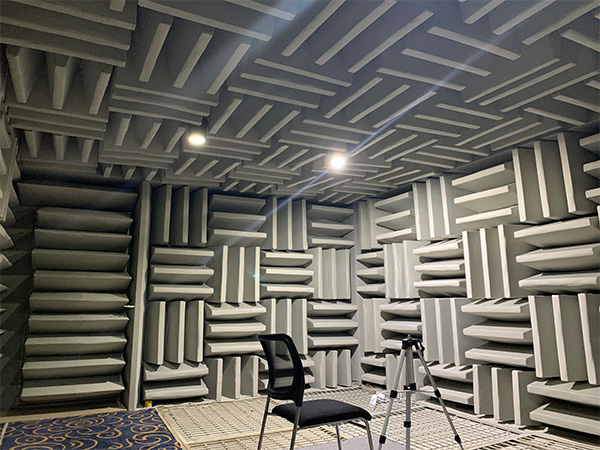The anechoic chamber is a soundproof space specially designed to reduce sound transmission and reflection. It is usually used in audio testing, acoustic research, noise control and other fields. The design standards and sound insulation effect of the anechoic chamber are crucial to ensuring the quietness of the internal environment and the accuracy of the test. In different application fields, the standard decibel requirements of anechoic chambers will be different. The following will introduce several common standard decibel requirements of anechoic chambers and their importance.
Audio testing: In the field of audio testing, anechoic chambers are usually used for performance testing of audio equipment, sound quality evaluation, etc. To ensure the accuracy of test results, the internal environment of the anechoic chamber needs to maintain extremely low noise levels. Standard decibel requirements typically range from 15 dB to 35 dB, depending on the accuracy and requirements of the test. Reaching this standard can effectively eliminate the interference of external environmental noise on test results and ensure the reliability of test data. This type is used by ordinary factories to conduct acoustic tests on the products they develop. An ordinary anechoic chamber can meet the needs. However, when building an anechoic chamber, the size of the anechoic chamber must be determined according to the size of the product and testing requirements.
Acoustic research: In the field of acoustic research, anechoic chambers are widely used in acoustic experiments, noise control research, etc. The noise level inside the anechoic chamber directly affects the accuracy of experimental results and the reliability of research results. Standard decibel requirements typically range from 10 dB to 30 dB and may vary depending on the sensitivity and requirements of the experiment. Meeting this standard provides a quiet experimental environment and ensures the accuracy and reproducibility of research data. For those with special requirements, the decibel level of the anechoic chamber can be made even lower. The quietest laboratory in the world is the anechoic chamber at Microsoft headquarters.
Noise Control: In the field of noise control, anechoic chambers are used to test and evaluate noise levels from various noise sources and to study the effectiveness of noise control technologies. The design of the anechoic chamber needs to be able to effectively isolate internal and external noise to ensure the accuracy of test results. Standard decibel requirements typically range from 20 dB to 40 dB, depending on the test subject's noise level and control needs. Achieving this standard provides an environment suitable for conducting noise control research and testing. Generally, ordinary anechoic chambers can meet the requirements. If you want to save costs and facilitate movement, you can also choose a small anechoic box.
Standard decibel requirements for anechoic chambers are based on specific application areas and testing requirements. Through reasonable design and construction, ensuring that the anechoic chamber reaches the corresponding standard decibels can effectively reduce the impact of noise on the internal environment and improve the accuracy and reliability of testing and research. When building an anechoic room, the standard decibels should be determined according to specific needs, and corresponding measures should be taken to ensure that the sound insulation effect reaches the standard.

